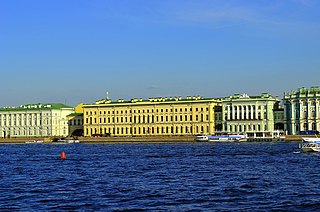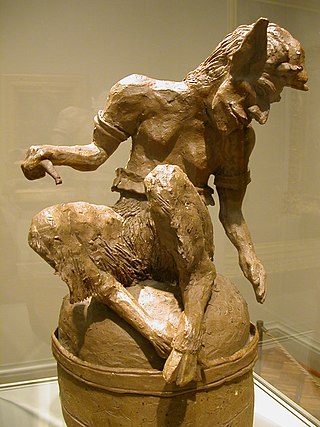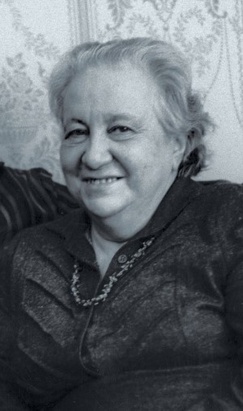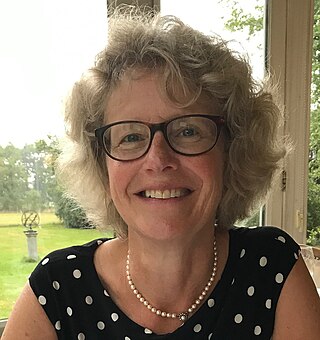Related Research Articles

The State Hermitage Museum is a museum of art and culture in Saint Petersburg, Russia. It was founded in 1764 when Empress Catherine the Great acquired a collection of paintings from the Berlin merchant Johann Ernst Gotzkowsky. The museum celebrates the anniversary of its founding each year on 7 December, Saint Catherine's Day. It has been open to the public since 1852. The Art Newspaper ranked the museum 10th in their list of the most visited art museums, with 2,812,913 visitors in 2022.

Cornelius David Krieghoff was a Dutch-born Canadian-American painter of the 19th century. He is best known for his paintings of Canadian genre scenes involving landscapes and outdoor life, which were as sought after in his own time as they are today. He painted many winter scenes, some in several variants.
Eric Hebborn was an English painter, draughtsman, art forger and later an author.

Thomas Patrick Keating (1917–1984) was an English artist, art restorer and art forger. Considered the most prolific and versatile art forger of the 20th century, he claimed to have faked more than 2,000 paintings by over 160 different artists of unprecedented scope—ranging from the Renaissance to Modernism, Expressionism and Fauvism —with heavy emphasis on English landscape Romanticists and the French Impressionists. Total estimated profits from his forgeries amount in today's value to more than $10 million.

Samuel Palmer Hon.RE was a British landscape painter, etcher and printmaker. He was also a prolific writer. Palmer was a key figure in Romanticism in Britain and produced visionary pastoral paintings.

Kenneth Roy Thomson, 2nd Baron Thomson of Fleet, known in Canada as Ken Thomson, was a Canadian/British businessman and art collector. At the time of his death, he was listed by Forbes as the richest person in Canada and the ninth richest person in the world, with a net worth of approximately US $19.6 billion.

Art forgery is the creation and sale of works of art which are falsely credited to other, usually more famous artists. Art forgery can be extremely lucrative, but modern dating and analysis techniques have made the identification of forged artwork much simpler.
Events from the year 1976 in art.
Frank Norman was a British novelist and playwright.

The Little Fourteen-Year-Old Dancer is a sculpture begun c. 1880 by Edgar Degas of a young student of the Paris Opera Ballet dance school, a Belgian named Marie van Goethem.
Shaun Greenhalgh is a British artist and former art forger. Over a seventeen-year period, between 1989 and 2006, he produced a large number of forgeries. With the assistance of his brother and elderly parents, who fronted the sales side of the operation, he successfully sold his fakes internationally to museums, auction houses, and private buyers, accruing nearly £1 million.

The Faun is a sculpture by British forger Shaun Greenhalgh. He successfully passed it off as a work by Paul Gauguin, selling it at Sotheby's for £20,700 in 1994. Three years later, in 1997, it was bought by the Art Institute of Chicago for an undisclosed sum, thought to be about $125,000. It was hailed by them as "one of its most important acquisitions in the last twenty years."

Wattisfield is a village and civil parish in the Mid Suffolk district of Suffolk in eastern England. Located on the A143 around seven miles south-west of Diss, in 2005 its population was 440, increasing to 475 at the 2011 Census.
Alexander Ivanov is a Russian art collector who lives in Moscow. He is best known for the Fabergé Museum in Baden-Baden, which is the first private Russian-owned museum outside of Russia. In the 2010s, he claimed that a Middle Eastern collector offered him $2 billion for his Fabergé collection, the world's largest collection in his own words. Other collecting interests include dinosaur fossils, ancient Greek and Roman art, pre-Columbian gold, Old Master paintings, Impressionist paintings, Orthodox icons, and vintage automobiles.

The Fabergé Museum is a privately owned museum located in the German spa city of Baden-Baden, dedicated to items made by the Russian jewellery firm Fabergé. It was opened by Russian art collector Alexander Ivanov on 9 May 2009. It is owned by the private limited company Fabergé Museum GmbH, which was originally co-founded by Alexander Ivanov and Konstantin Goloshchapov in January 2008.

The Private Apartments of the Winter Palace are sited on the piano nobile of the western wing of the former imperial palace, the Winter Palace in St Petersburg. Access to the private rooms, for members of the imperial family, from the exterior was usually through the Saltykov Entrance which was reserved for use by only the Tsar, Tsaritsa and grand dukes and grand duchesses. A second access was through a discrete box-like porch, on the western end of the palace's Neva façade. From the ground floor, it can be accessed from the October Staircase, formerly known as His Majesty's Own Staircase; this double-flighted imperial staircase was a secondary entrance to the private apartments, and provided a more convenient route to the palace's ground floor and private entrances than the more formal and ceremonial public route through the state apartments. During the October Revolution of 1917, this was the entrance by which the revolutionaries gained access to the palace in order to arrest the Provisional Government in the small private dining room. Since that date it has been known as the October Staircase and has a plaque commemorating the event. Despite its size and grandeur, the October Staircase was a secondary staircase, the Jordan Staircase being the principal.
Fauxbergé is a term coined to generally describe items that are faking a higher quality or status and in specific terms relates to the House of Fabergé, which was a Russian jewellery firm founded in 1842 in Saint Petersburg and nationalised by the Bolsheviks in 1918. The term was first mentioned in a publication by auctioneer and Fabergé book author Archduke Géza of Austria in his article "Fauxbergé" published in Art and Auction in 1994. He also used it during the exhibition "Fabergé in America" in 1996 and subsequently.

Hripsime Djanpoladjian was an archaeologist and epigrapher originally from Armenia.

Liesbeth Heenk is an international publisher, author and art historian specialised in Vincent van Gogh. She is the founder of Amsterdam Publishers which is the largest international publisher of Holocaust memoirs in Europe.
References
- 1 2 Europa Publications (2003). International Who's Who of Authors and Writers 2004. Psychology Press. pp. 413–. ISBN 978-1-85743-179-7.
- ↑ Philip Hook (26 January 2017). Rogues' Gallery: A History of Art and its Dealers. Profile. pp. 227–. ISBN 978-1-78283-215-7.
- ↑ FIONA MACCARTHY (1991). "Someone Was Silly". The New York Times. Retrieved 11 March 2018.
- ↑ "The Ultimate In Reality TV? Try Televised Art Forgery". Forbes. Retrieved 11 March 2018.
- ↑ "Are these flowers real?". The Daily Telegraph. Archived from the original on 26 February 2016. Retrieved 11 March 2018.
- ↑ David I. Grossvogel (2001). Behind the Van Gogh Forgeries: A Memoir. iUniverse. pp. 182–. ISBN 978-0-595-17717-2.
- ↑ "New Year honours list: diplomatic service and overseas". The Guardian. 31 December 2010. ISSN 0261-3077 . Retrieved 5 February 2024.